
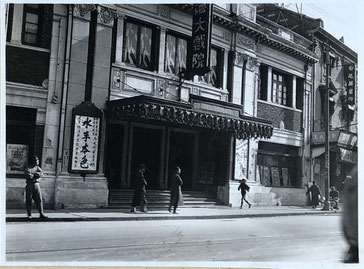
This historic postcard from our collection of a Japanese barricade beneath a Coca-Cola billboard, undoubtedly portrays one of the most surreal moments in Shanghai’s history. A closer investigation of the multiple depictions of this scene however leads to a surprising realization.
Firstly, the location is given as near the Isis Theatre. This establishment was just outside of the International Settlement boundaries in Hongkew district on the corner of North Szechuen Rd & Jukong Rd (todays Sichuan Bei Lu & Qiujiang Lu). A strategic intersection, that was in fact the site of repeated fighting during the multiple Sino-Japanese conflicts from the 1930s to 40s.
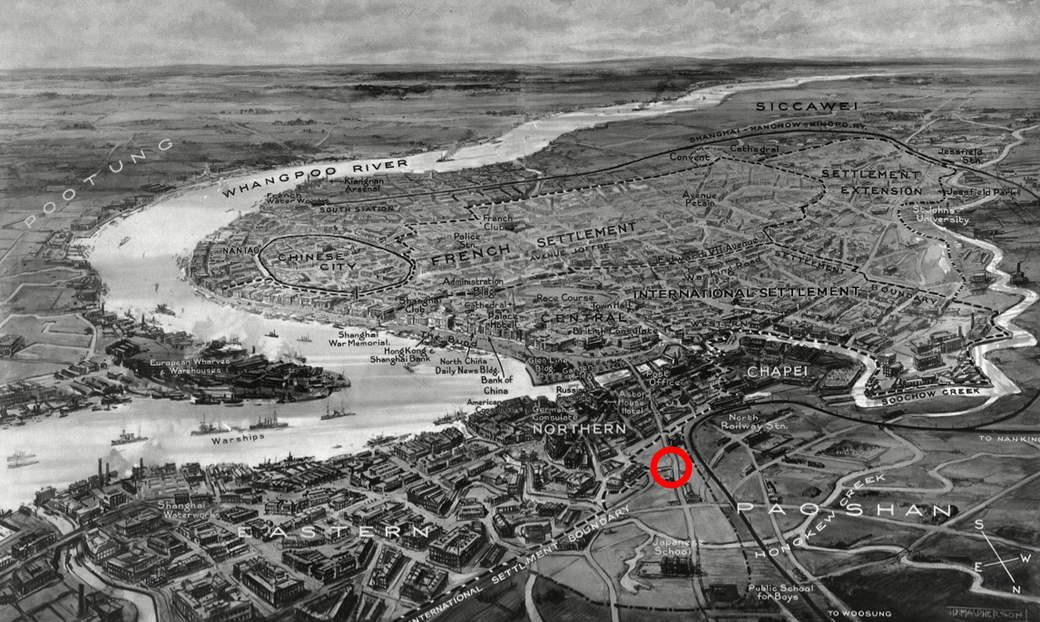
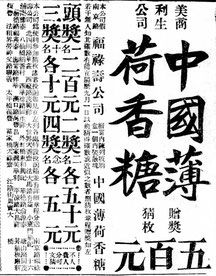
There is one key giveaway though in the picture that allows us to exactly date the year of the photo: The green advertisement besides the My Dear Cigarettes (美丽牌) and Coca Cola billboards is for Chinese Mint Candy (中国薄荷香糖).
This sweet was manufactured by the American Essential Oil Products Company (美商利生公司) and was only advertised in 1930 and 1931, after which the product was discontinued.
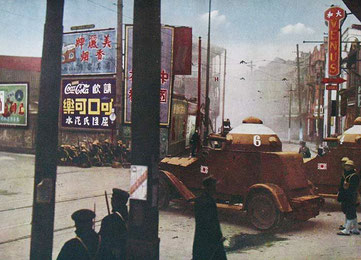
The postcard and four other existing photos of the same scene, thus can be clearly attributed to the Shanghai January 28 incident in 1932.
The armed conflict between Imperial Japan and the Republic of China was triggered by protests against the Japanese invasion of Manchuria.
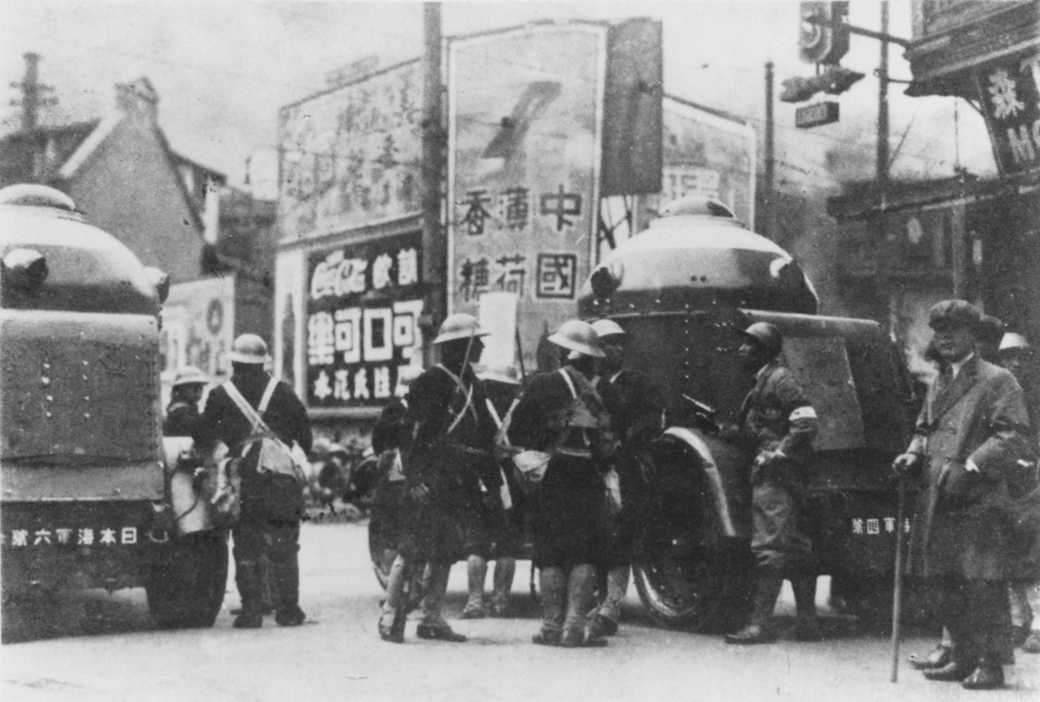
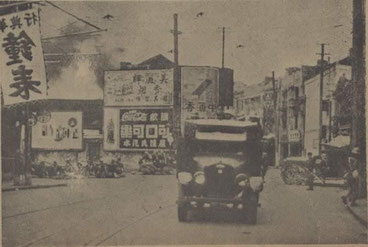
It resulted in close to 20,000 civilian deaths and lasted until May 5th 1932, when a ceasefire agreement was signed.
The perplexing thing is that at least three more photos of the same street corner exist, which are nearly identical to the first five.

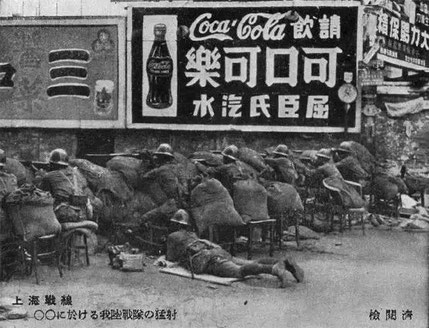
The difference is that, on them an advertisement for Kazumi Pickles (和三酱菜) is visible next to the Coca Cola billboard and the candy ad is notably missing.
A postcard of the scene reveals that it was indeed once again taken on Kewkong Road (alternative spelling for Jukong Rd) but this time in the 12th year of the Japanese Showa era, which translates to 1937.
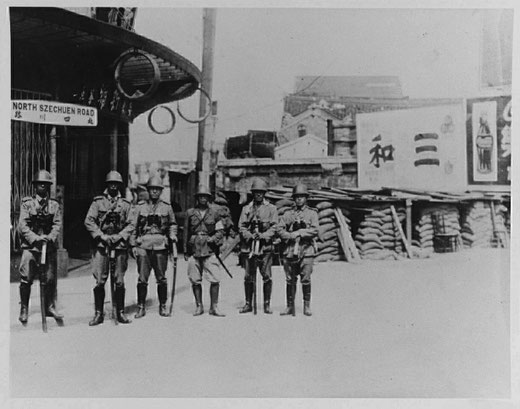
Ironically, a similar scene at the intersection of war and commerce therefore occurred at the very same iconic spot during both the Shanghai Incident of 1932 and the Battle of Shanghai at the beginning of the Second Sino-Japanese War five years later. No matter if the second set of photos were perhaps deliberately staged, they offered a striking opportunity for the Japanese propaganda machine to portray their troops not only fighting the Chinese army, but also Western influence in Asia, symbolized by the ubiquitous red Coca Cola ads.
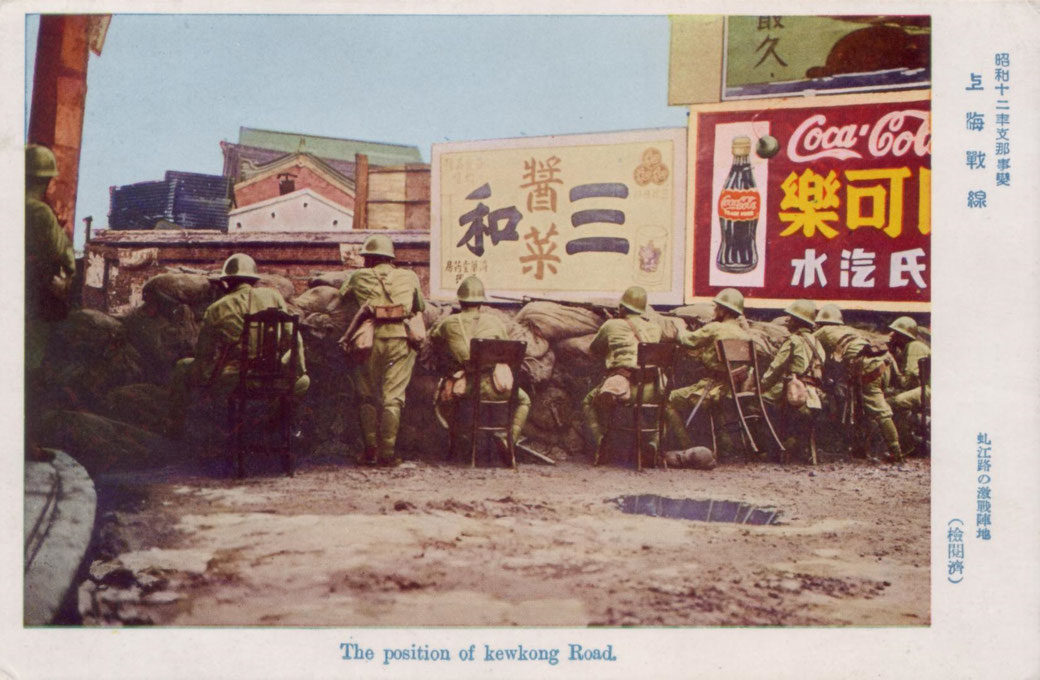
P.S.: Peter Harmsen, author of Shanghai 1937, came to a similar conclusion by comparing the blue 1932 winter uniforms of the Japanese soldiers depicted in the first set of images with the green uniforms used in late summer of 1937 and visible on the second batch of photos: http://www.shanghai1937.com/the-coca-cola-ad/
















Write a comment